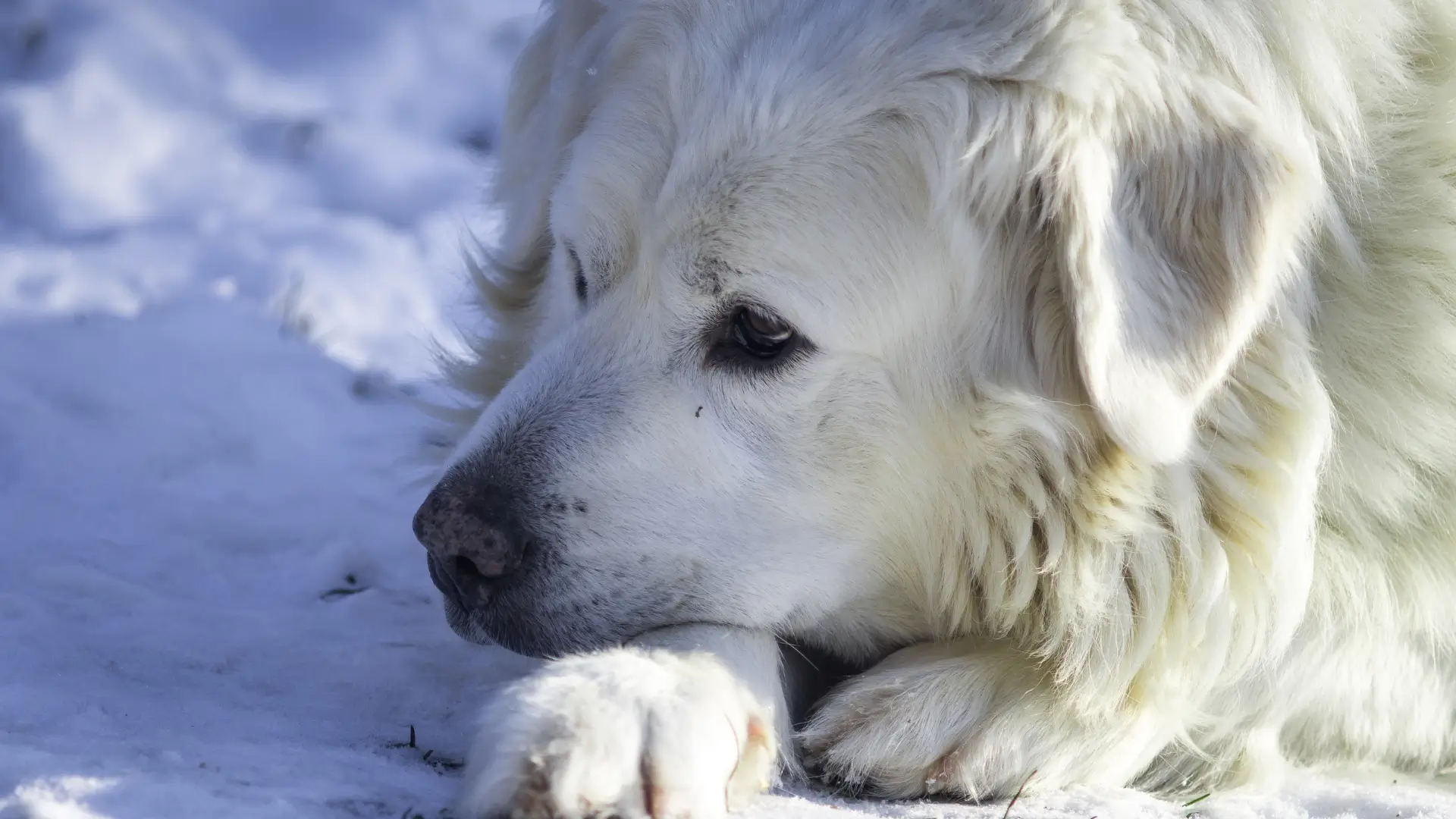Quick search for vets, hospitals or clinics

I thought I would share a little about myself! I am a part of the Foundation Stock Service Group of Dogs. I tend to weigh 68lbs and after I get into the dog food and peanut butter jar I can weigh up to 97lbs. Some people describe me as Alert, Brave or Faithful. I'll usually be in your life for around 11 to 13 years so make sure you are ready for a long-term commitment!
Slovensky Cuvac
The Slovensky Cuvac is a Slovak breed known for its thick white coat and protective instincts. Originally used for guarding livestock, they are loyal and fearless, making excellent watchdogs and family protectors. They thrive in environments where they can exercise and play.
Grooming
Higher ratings mean Slovensky Cuvacs need more frequent grooming while lower ratings require less grooming maintenance
Shedding
Higher ratings mean Slovensky Cuvacs shed more often while lower values indicate they shed minimally
Shedding is a natural process for Slovensky Cuvacs, where they lose old or damaged hair to make room for new growth. In terms of dogs, shedding helps maintain a healthy coat and regulate body temperature. Most dogs experience shedding seasons, typically in the spring and fall, when they shed their winter or summer coats. These seasons can last several weeks, during which you might notice an increase in the amount of fur around your home.
For Slovensky Cuvacs with heavy to constant shedding (ratings 7-10), shedding is a significant and ongoing process. These dogs will leave a noticeable amount of fur around your home, requiring regular and diligent grooming. Daily brushing is often necessary to manage their shedding and keep their coats healthy and free of mats.
Shedding is a sign of a healthy coat. It’s how your Slovensky Cuvac naturally replaces old fur with new. However, if you notice excessive shedding outside of these periods, or if your dog seems to shed very little, it might indicate an underlying health issue. Factors such as stress, poor diet, allergies, or skin conditions can affect shedding patterns.
The amount of shedding varies widely among different breeds. Some dogs, like many short-haired breeds, shed a lot because they have continuous hair growth cycles. Other breeds, especially those with curly or wiry coats, like Poodles and some Terriers, shed very little because their hair growth cycle is much slower and their hair tends to mat rather than fall out.
A balanced diet is crucial for your Slovensky Cuvac’s skin and coat health. Nutrients such as omega-3 and omega-6 fatty acids play a significant role in maintaining a healthy coat and reducing excessive shedding. If your dog’s diet is lacking in essential nutrients, you may notice increased shedding or a dull coat.
By following these tips, you can help reduce excessive shedding in your Slovensky Cuvac and maintain a cleaner, healthier home environment. It’s essential to monitor your dog’s shedding patterns and consult a veterinarian if you have concerns about excessive or insufficient shedding. Regular grooming and a proper diet will help ensure your dog’s coat stays healthy and manageable.
Energy
Higher ratings mean Slovensky Cuvacs are more energetic while lower levels mean they are more on the calm side
Low energy dogs are often the perfect companions for people who lead more sedentary lifestyles, have limited mobility, or simply prefer a calm and quiet household. These breeds typically require less exercise and are content with shorter, more leisurely activities. But what factors contribute to a dog’s low energy levels?
Certain dog breeds are inherently low energy due to their genetic makeup and historical roles. For example, breeds like the Bulldog and Basset Hound were bred for purposes that did not require high stamina or agility. Bulldogs, originally bred for bull-baiting, now exhibit a more sedentary lifestyle, while Basset Hounds, with their short legs and heavy bodies, are built for tracking rather than fast-paced activities.
Smaller breeds, such as the Shih Tzu or the Pekingese, often have lower energy levels due to their size and build. These dogs were historically bred to be companion animals rather than working dogs, and they thrive on minimal exercise. Larger breeds like the Great Dane, despite their size, can also be low energy as their large bodies require more rest and shorter bursts of activity.
Health issues and age can significantly impact a dog’s energy levels. Older dogs, regardless of breed, tend to have less energy and prefer resting over vigorous activities. Similarly, dogs with health conditions such as arthritis or respiratory problems may exhibit lower energy levels and require gentler exercise routines.
Individual temperament plays a crucial role in a dog’s energy levels. Even within an active breed, you might find individuals who are naturally more laid-back. Personality differences mean that some dogs are naturally more inclined to rest and relax rather than engage in continuous activity.
In summary, low energy dogs make excellent pets for those seeking a more relaxed and manageable pet experience. Understanding the factors that contribute to a dog’s energy level can help potential pet owners make informed decisions and provide the best care for their furry companions.
No results available
Reset
Finding a Friendly, Local Veterinarian has never been easier. LocalVeterinarians.com makes it simple to find Local Veterinarians, Veterinary Clinics, Doctors, Emergency Vets, Animal Hospitals and Pet Care Health Services. Search by location and see detailed information about each Local Veterinarian, including their services, website link, and contact information.
Click to Ask Anything!